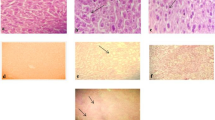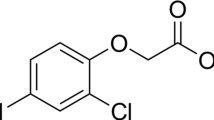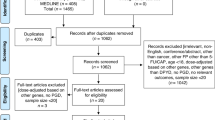Abstract
Employment in the manufacture of the herbicide 2,4,5-trichlorophenoxyacetic acid (2,4,5-T) is associated with potential exposure to 2,3,7,8-tetrachlorodibenzo-p-dioxin (TCDD) and elevated serum lipid TCDD concentrations can be measured in workers for decades after terminated occupational exposure. As part of an epidemiological study of 1599 workers employed at a facility in New Plymouth, New Zealand that manufactured 2,4,5-T, serum TCDD concentrations measured in blood samples from 346 workers were used with work history records and a simple pharmacokinetic model in a linear regression to estimate dose rates associated with specific job exposure groups at the facility. The model was used to estimate serum TCDD concentration profiles over time for each individual in the full study group and accounted for 30% of the observed variance in TCDD concentrations in the serum donor subgroup. The model underestimated measured concentrations substantially for eleven individuals in the study group; examination of questionnaire data revealed a variety of activities apart from routine employment at the facility that may have contributed to the measured serum TCDD concentrations. Estimated serum TCDD concentrations were below 300 p.p.t. for all individuals in the cohort over the entire study time period, lower than estimates for other 2,4,5-T worker populations. This finding is consistent with occupational medicine records, which indicated that no cases of chloracne were ever diagnosed among workers employed on the site. The modeled exposures will be used in an evaluation of mortality patterns of workers at this facility.
This is a preview of subscription content, access via your institution
Access options
Subscribe to this journal
Receive 6 print issues and online access
$259.00 per year
only $43.17 per issue
Buy this article
- Purchase on SpringerLink
- Instant access to full article PDF
Prices may be subject to local taxes which are calculated during checkout



Similar content being viewed by others
References
Aylward L.L., Brunet R.C., Carrier G., Hays S.M., Cushing C.A., Needham L.L., Patterson D.G., Gerthoux P.M., Brambilla G., and Mocarelli P. Concentration-dependent TCDD elimination kinetics in humans: toxicokinetic modeling for moderately to highly exposed adults from Seveso, Italy, Vienna, Austria, impact on dose estimates for the NIOSH cohort. J Expo Anal Environ Epidemiol 2005a: 15: 51–65.
Aylward L.L., Brunet R.C., Starr T.B., Carrier G., Delzell E., Cheng H., and Beall C. Exposure reconstruction for the TCDD-exposed NIOSH cohort using a concentration-, age-dependent model of elimination. Risk Anal 2005b: 25: 945–956.
Bates M.N., Buckland S.J., Garrett N., Ellis H., Needham L.L., Patterson Jr D.G., Turner W.E., and Russell D.G. Persistent organochlorines in the serum of the non-occupationally exposed New Zealand population. Chemosphere 2004: 54: 1431–1443.
Beck H., and Eckart K., et al. Levels of PCDDs, PCDFs in adipose tissue of occupationally exposed workers. Chemosphere 1989: 18 (1–6): 507–516.
Charlier C., Desaive C., and Plomteux G. Human exposure to endocrine disrupters: consequences of gastroplasty on plasma concentration of toxic pollutants. Int J Obes Relat Metab Disord 2002: 26: 1465–1468.
Chevrier J., Dewailly E., Ayotte P., Mauriege P., Despres J.P., and Tremblay A. Body weight loss increases plasma and adipose tissue concentrations of potentially toxic pollutants in obese individuals. Int J Obes Relat Metab Disord 2000: 24: 1272–1278.
Collins J.J., Budinsky R.A., Burns C.J., Lamparski L.L., Carson M.L., Martin G.D., and Wilken M. Serum dioxin levels in former chlorophenol workers. J Expo Sci Environ Epidemiol 2006: 16: 76–84.
Collins J.J., Wilken M., McBride D.I., Humphrey N.F., Brzak K., Herbison P., Burns C.J., and Bodner K.M. Serum dioxins, furans, and PCB levels among New Zealand trichlorophenol workers. Organohalogen Compounds 2008: 70: 1193–1196.
Crump K.S., Canady R., and Kogevinas M. Meta-analysis of dioxin cancer dose response for three occupational cohorts. Environ Health Perspect 2003: 111: 681–687.
Deurenberg P., Weststrate J.A., and Seidell J.C. Body mass index as a measure of body fatness: age- and sex-specific prediction formulas. Br J Nutr 1991: 65: 105–114.
Ferriby L.L., Knutsen J.S., Harris M., Nony P., Unice K.M., Paustenbach D.J., Haws L.C., and Scott P. Evaluation of PCDD/F and dioxin-like PCB serum concentration data from the 2001-2002 National Health and Nutrition Examination Survey of United States citizens. J Exp Sci Environ Epidemiol 2007: 17: 358–371.
Flesch-Janys D., Becher H., Gurn P., Jung D., Konietzko J., Manz A., and Papke O. Elimination of polychlorinated dibenzo-p-dioxins and dibenzofurans in occupationally exposed persons. J Toxicol Environ Health 1996: 47: 363–378.
Flesch-Janys D., Steindorf K., Gurn P., and Becher H. Estimation of the cumulated exposure to polychlorinated dibenzo-p-dioxins/furans and standardized mortality ratio analysis of cancer mortality by dose in an occupationally exposed cohort. Environ Health Perspect 1998: 106 (Suppl 2): 655–662.
Glynn A.W., Granath F., Aune M., Atuma S., Darnerud P.O., Bjerselius R., Vainio H., and Weiderpass E. Organochlorines in Swedish women: determinants of serum concentrations. Environ Health Perspect 2003: 111: 349–355.
Heederik D., and Hooiveld M., et al. Modelling of 2,3,7,8-tetrachlorodibenzo-p-dioxin levels in a cohort of workers with exposure to phenoxy herbicides and chlorophenols. Chemosphere 1998: 37 (9–12): 1743–1745.
Imbeault P., Chevrier J., Dewailly E., Ayotte P., Despres J.P., Tremblay A., and Mauriege P. Increase in plasma pollutant levels in response to weight loss in humans is related to in vitro subcutaneous adipocyte basal lipolysis. Int J Obes Relat Metab Disord 2001: 25: 1585–1591.
Imbeault P., Tremblay A., Simoneau J.A., and Joanisse D.R. Weight loss-induced rise in plasma pollutant is associated with reduced skeletal muscle oxidative capacity. Am J Physiol Endocrinol Metab 2002b: 282: E574–E579.
Johnson E.S., Parsons W., Weinberg C.R., Shore D.L., Mathews J., Patterson Jr D.G., and Needham L.L. Current serum levels of 2,3,7,8-tetrachlorodibenzo-p-dioxin in phenoxy acid herbicide applicators and characterization of historical levels. J Natl Cancer Inst 1992: 84: 1648–1653.
Littorin M., and Hansson M., et al. Dioxins in blood from Swedish phenoxy herbicide workers. Lancet 1994: 344: 611–612.
Milbrath M.O., Chang C.-W., Emond C., Franzblau A., Garabrant D.H., Gillespie B.W., Wenger Y., Adriaens P., and Jolliet O. Half-lives of dioxins, furans, and PCBs as a function of age, body fat, breastfeeding, and smoking status. Organohalogen Compounds 2007: 69: 2252–2255.
Mussalo-Rauhamaa H., Pyysalo H., and Antervo K. Relation between the content of organochlorine compounds in Finnish human milk and characteristics of the mothers. J Toxicol Environ Health 1988: 25: 1–19.
Nygren M., and Hansson M., et al. Development and validation of a method for determination of PCDDs and PCDFs in human plasma: a multivariate comparison of blood and adipose tissue levels between Vietnam veterans and matched controls. Chemosphere 1988: 17 (9): 1663–1692.
Ott M.G., and Zober A. Cause specific mortality and cancer incidence among employees exposed to 2,3,7,8-TCDD after a 1953 reactor accident. Occup Environ Med 1996: 53: 606–612.
Ott M.G., and Messerer P., et al. Assessment of past occupational exposure to TCDD using blood lipid analyses. Int Arch Occup Environ Health 1993: 65 (1): 1–8.
Papke O., and Ball M., et al. Various PCDD/PCDF patterns in human blood resulting from different occupational exposures. Chemosphere 1992: 25 (7–10): 1101–1108.
Pelletier C., Despres J.P., and Tremblay A. Plasma organochlorine concentrations in endurance athletes and obese individuals. Med Sci Sports Exerc 2002a: 34: 1971–1975.
Pelletier C., Doucet E., Imbeault P., and Tremblay A. Associations between weight loss-induced changes in plasma organochlorine concentrations, serum T(3) concentration, and resting metabolic rate. Toxicol Sci 2002b: 67: 46–51.
Piacitelli L.A., and Haring Sweeney M., et al. Serum levels of PCDDs and PCDFs among workers exposed to 2,3,7,8-TCDD contaminated chemicals. Chemosphere 1992: 25: 251–254.
Pinsky P.F., and Lorber M.N. A model to evaluate past exposure to 2,3,7,8-TCDD. J Expo Anal Environ Epidemiol 1998: 8 (2): 187–206.
Ryan J.J., and Schecter A. Exposure to Russian phenoxy herbicide producers to dioxins. J Occup Environ Med 2000: 42: 861–870.
Smith A.H., and Patterson D.G., et al. Serum 2,3,7,8-tetrachlorodibenzo-p-dioxin levels of New Zealand pesticide applicators and their implication for cancer hypotheses. J Natl Cancer Inst 1992: 84: 104–108.
Steenland K., Deddens J., and Piacitelli L. Risk assessment for 2,3,7,8-tetrachlorodibenzo-p-dioxin (TCDD) based on an epidemiologic study. Am J Epidemiol 2001: 154: 451–458.
Walford R.L., Mock D., MacCallum T., and Laseter J.L. Physiologic changes in humans subjected to severe, selective calorie restriction for two years in biosphere 2: health, aging, and toxicological perspectives. Toxicol Sci 1999: 52: 61–65.
Acknowledgements
We thank the current and former workers who donated their blood and time to this study. We also thank AgriQuality (now AsureQuality) for the dioxin serum analysis, Trium Environmental Solutions Inc. for auditing the laboratory's work, total risk management, and corporate risks for arranging the blood collection, and Wellington Pathology for collecting, storing, and delivering the blood to the laboratory. A science advisory panel of Dr. Elizabeth Delzell, University of Alabama, USA; Professor Des Gorman, Auckland University, New Zealand; Dr. Rhonda Rosengren, University of Otago, New Zealand; Professor Sir John Scott (retired) Auckland University, New Zealand; and Professor Thomas Sorahan, University of Birmingham, England, provided scientific input into this study. This study conduct was pursuant to review and oversight by the Central Regional Ethics Committee in New Zealand and The Dow Chemical Company's Human Subjects Review Board in Midland, Michigan, USA.
Author information
Authors and Affiliations
Corresponding author
Ethics declarations
Competing interests
This study was conducted cooperatively by scientists from the University of Otago, The Dow Chemical Company, and Summit Toxicology and was funded by The Dow Chemical Company, which owns and operates the plant that is the subject of the study.
Rights and permissions
About this article
Cite this article
Aylward, L., Bodner, K., Collins, J. et al. TCDD exposure estimation for workers at a New Zealand 2,4,5-T manufacturing facility based on serum sampling data. J Expo Sci Environ Epidemiol 20, 417–426 (2010). https://doi.org/10.1038/jes.2009.31
Received:
Revised:
Accepted:
Published:
Issue date:
DOI: https://doi.org/10.1038/jes.2009.31



